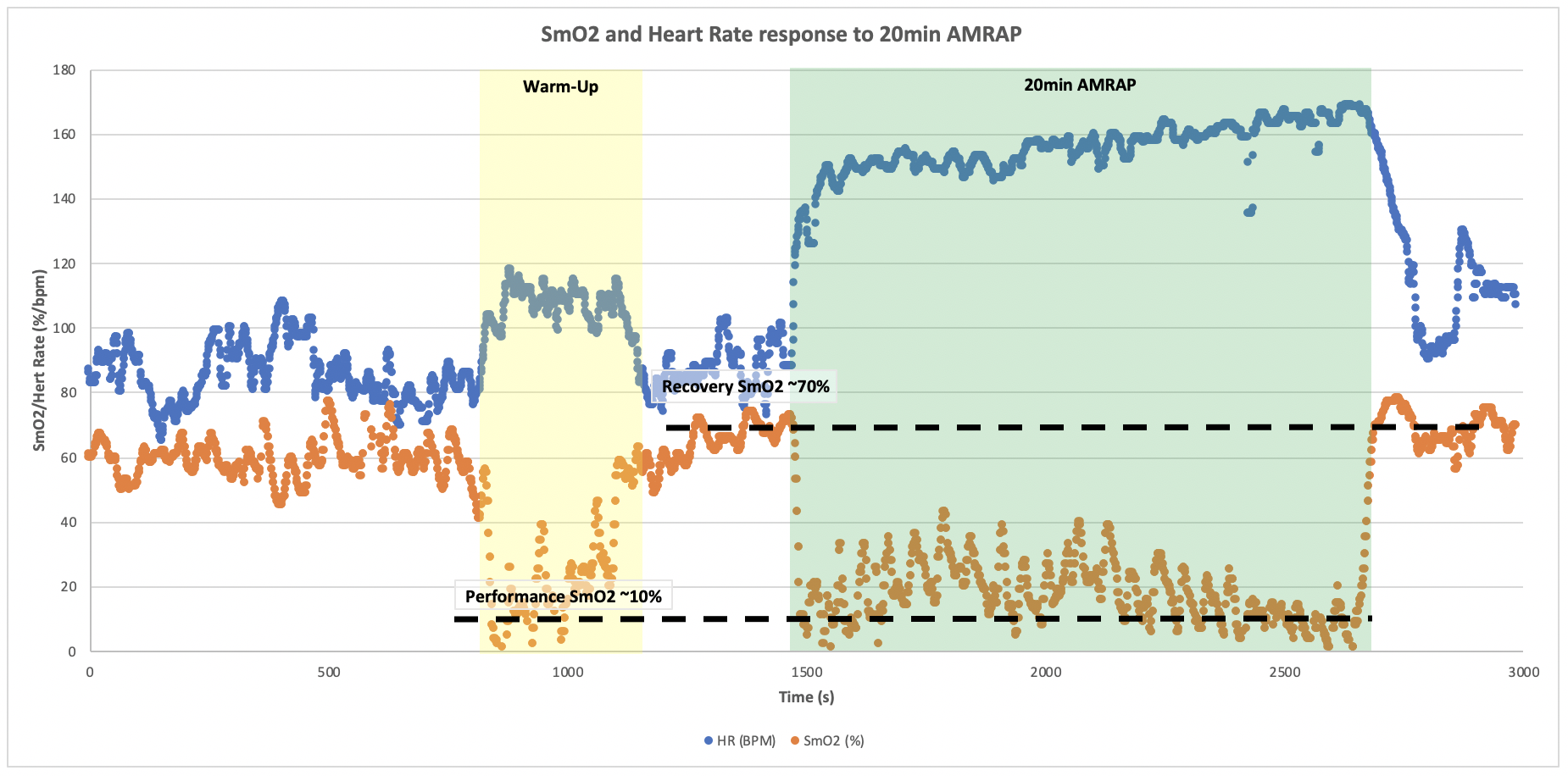Case Study: Moxy for High Intensity Functional Training Pacing
Multimodal Fitness or High Intensity Functional Training (HIFT) has gained a considerable following in the past few years. It provides a class based setting that aims to improve metabolic conditioning, strength, and gymnastic ability, amongst other things. Over the first quarter of the year, I have been attending classes. Admittedly, I was a bit skeptical at first but have grown to love the challenge of the different movements and ability to scale any movement in order to complete the workout. One of the major challenges that people going to these classes, myself included, face is the ability to properly pace yourself throughout the entire workout. While some very experienced athletes know that they can complete X number of body weight squats with Y amount of rest, this pacing gets way more challenging when you couple squats with burpees, or other movements.
Heart rate monitors have the potential to help with pacing but are not sensitive enough to detect quick changes in recovery that could happen from a 2-5 second pause during the workout. NIRS devices could have the potential to make assessments of recovery and pacing during workouts, because of their responsive nature to the exercises being completed. Therefore, I set out to use Moxy to learn more about my ability to pace during these taxing workouts.
Workout 1:
Warm-up:
5 rounds of:
:30 Plank
:30 Slow Air Squats
WOD:
Complete as many rounds and reps as possible (AMRAP) in 20 minutes of:
5 Push-ups
10 Grasshoppers
15 Air Squats
Notes: The 15 air squats were definitely going to be the limiting factor with this workout. Therefore, pacing the squats was essential to not blowing up after the first 10 minutes.
Strategy: I knew from the warm-up that low single digit SmO2 would be obtainable, so the goal was to pace the squats enough to do them continuously, while not decreasing SmO2 into the single digits.
Results: Completed 23 rounds +16 reps. Definitely paced myself well. This is shown in figure 1, below. The first few intervals might have been too fast but then I got into a solid rhythm where I would complete the squat motion fairly quickly but pause at the top for a two count. This allowed SmO2 to stay between 20-40% for the majority of the workout until the last few rounds when I decided to push for the finish.

Workout 2:
Warm-up:
5 rounds of:
5 Burpees
5 Walking Lunges (each side)
5 Object Deadlifts (50# DB)
5 Dumbbell snatches (50# DB)
WOD:
10-min AMRAP:
10 Air Squats
9 Dumbbell Snatches, right arm
10 Push-ups
9 Dumbbell Snatches, left arm
Notes: Most likely legs and dumbbell snatches (uses legs) would be limiting factors with this workout. The dumbbell snatches were just heavy enough that I knew that I needed to pace them right out of the gates or I would blow up very quickly.
Strategy: I knew from the warm-up that low single digit SmO2 would be obtainable, so the goal was to pace the squats enough to do them continuously, while not decreasing SmO2 too much.
Results: Completed 6 round +13 reps. During this workout I paced the squats similar to above where I would complete the squat motion quickly but pause at the top for a one count. This still resulted in a fairly low SmO2 which rebounded during the snatches, and further during the push-ups. The pacing for the snatches was key, since 50lbs is a bit heavy for me, I broke them up into sets of 3 with a small pause. Overall, fairly happy with this effort especially the last round where I pushed SmO2 pretty low.

